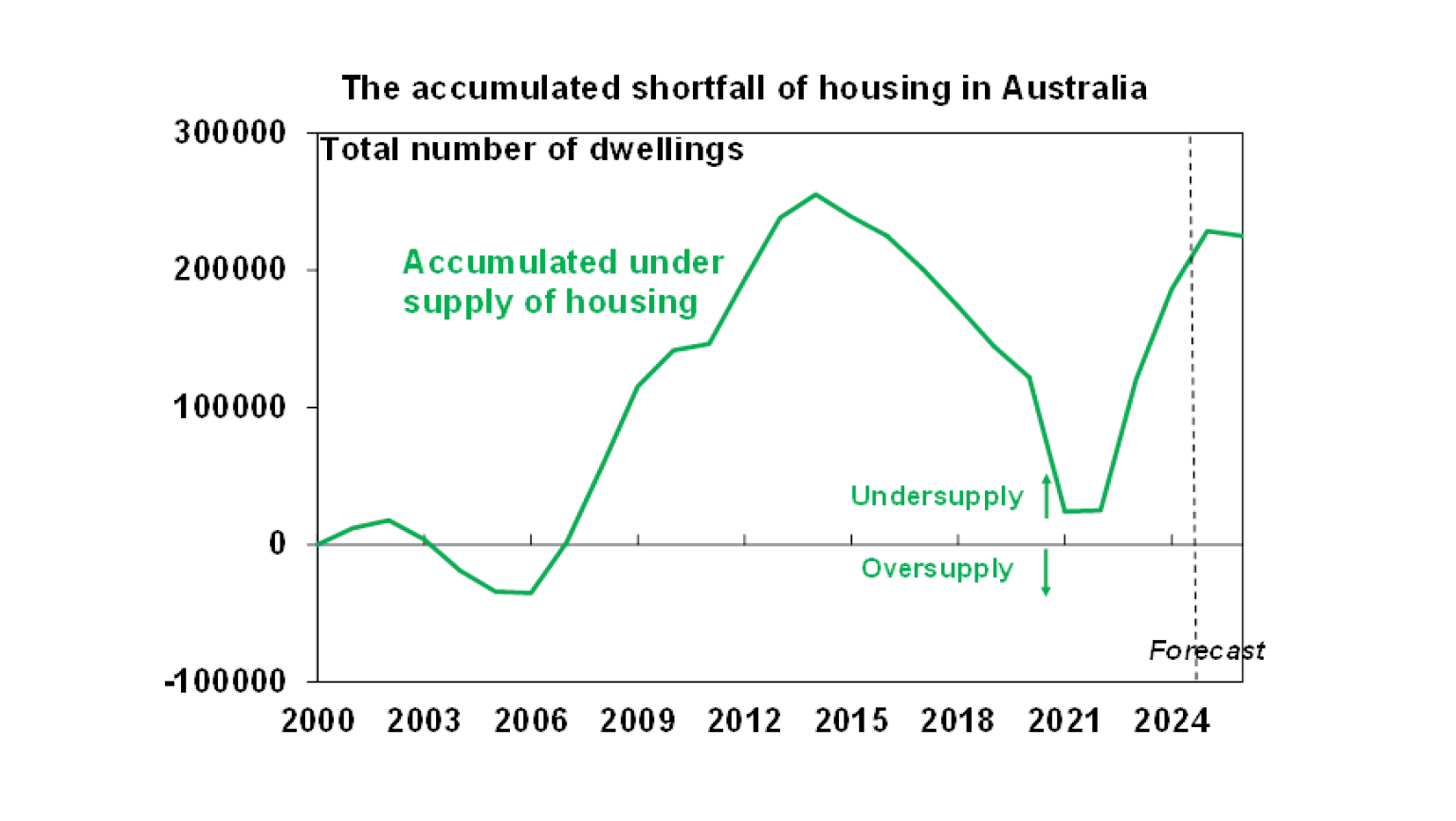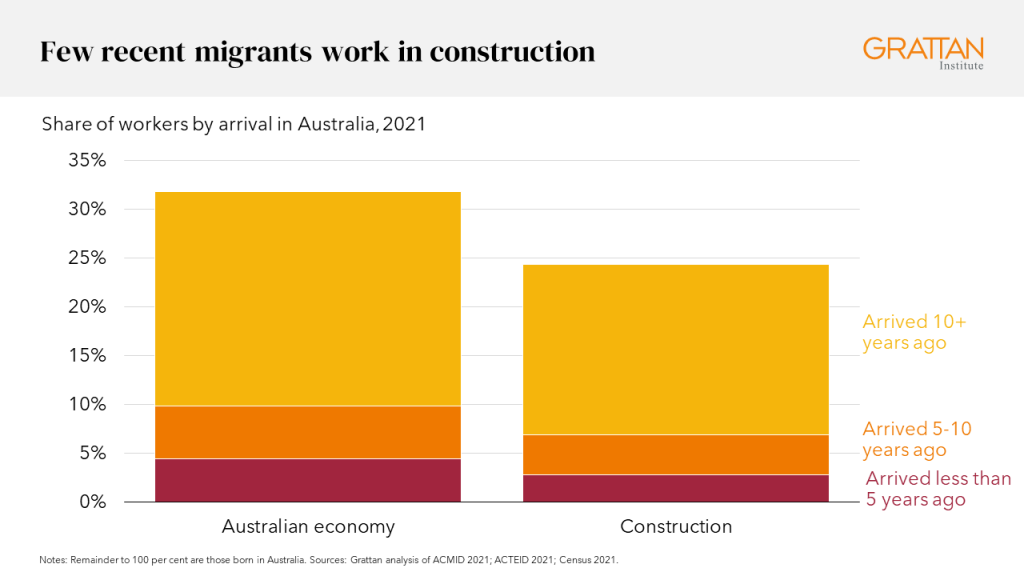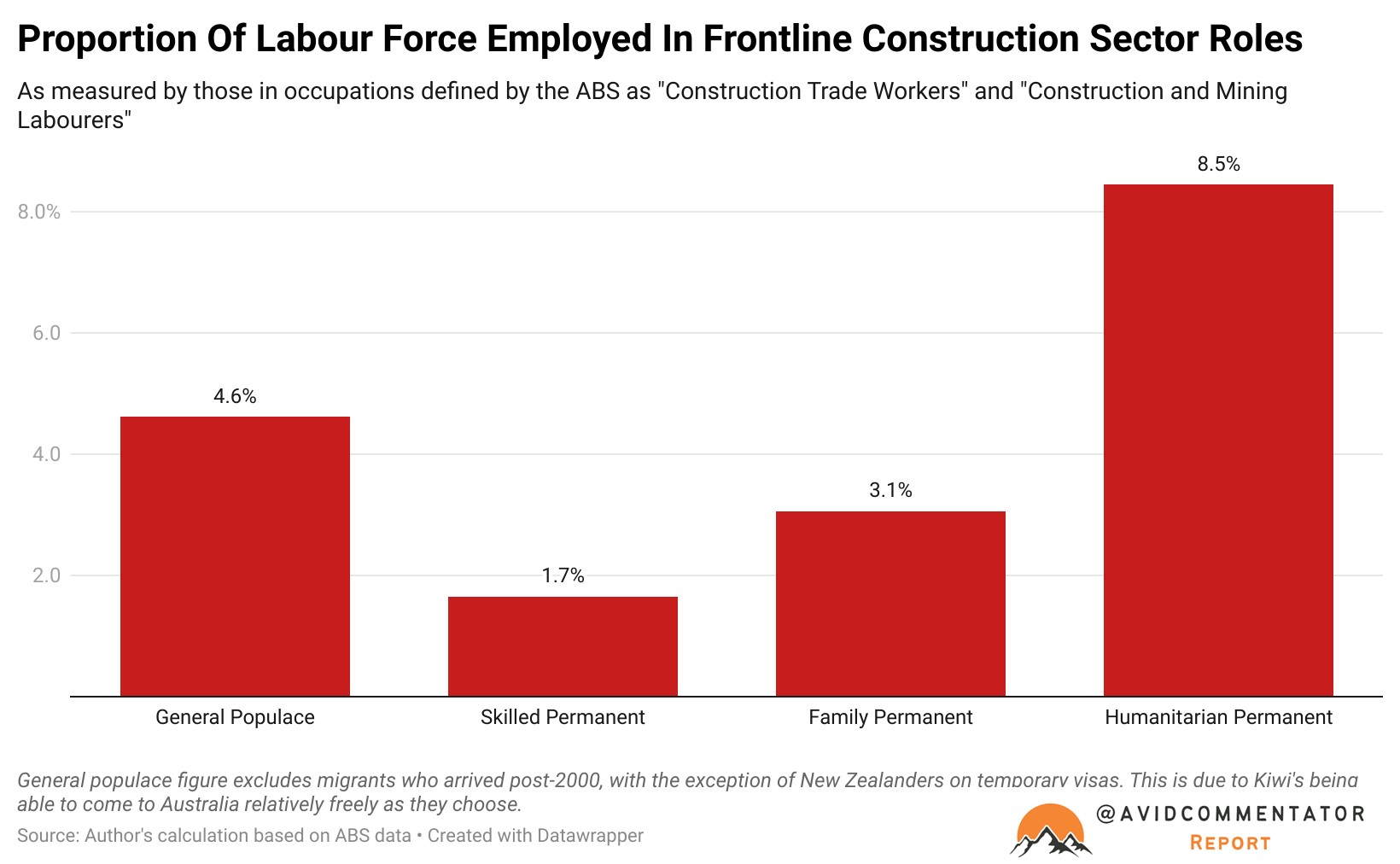One of the narratives put forward for high levels of immigration into Australia is that migrants are required to build sorely needed homes. At face value it seems to make sense. After all, we have a housing deficit that AMP’s Shane Oliver puts at up to 300,000 homes (once household demographic factors are added in) and migration has historically been used quite successfully to sustainably boost home construction.

Chart: AMP
Unfortunately, once you beyond a cursory glance outside of the narrative’s promise, it swiftly becomes clear that it hold’s water as well as a screen door on a submarine.
According to figures from the Census and ABS reports into migrant employment outcomes which have been assessed by the Grattan Institute, in 2021 migrants who arrived in the last 5 years accounted for 4.4% of the labour force. When the focus is shifted to the construction sector, that cohort of migrants makes up 2.8% of the sector’s workforce.
Shifting the focus back a bit to those who arrived five to 10 years ago, this demographic makes up 5.38% of the labour force and 4.09 per cent of the construction sector work force.

It’s worth noting that an asterix is required for these figures. As of the last snapshot of the temporary migrant labour force prior to Covid, there were 56% more Kiwi’s (New Zealanders) working in the construction sector than every other temporary visa class put together.
This is an astounding outcome for anyone taking today’s narrative at face value, given that there were almost 60,000 more temporary visa holders of other varieties in the labour force than there were New Zealanders. This is potentially playing a role in skewing the proportion of migrants in the construction sector higher.
It’s worth noting, too, that the snapshot being referenced by the Grattan Institute took place during lockdown, so the proportion of migrants in construction sector roles is arguably distorted higher, owing to the construction sector being one of the least impacted sectors in terms of employment during the pandemic.
Through the ABS reports on migrant employment outcomes, we can also gain a great deal of insight into what proportion of migrants in the various arrival streams are taking on jobs directly in a trade, rather than working in some other part of the sector.
For the purposes of today’s figures we will be focusing on “Construction Trade Workers” and “Construction and Mining Labourers”. While this is not a perfect proxy for employment at the heart of building Australia’s new homes, its likely as close are we going to get without an academic study into the figures.
Overall, of the Australian (including Kiwi’s here under the ongoing visa arrangement with New Zealand) but excluding other temporary migrants and permanent migrants who arrived in 2000 or later, 4.62 per cent of the total labour force works in these trades.
For permanent migrants who arrived at the turn of the millennium or later, at the time of the 2021 census 2.94% worked in these roles in the construction sector.
But when you dig into the figures a trend emerges that goes against the foundation of the “migrants are needed to build new homes” narrative.
It all comes down to one simple statement:
Permanent migrants who were chosen for their skills to come to Australia who arrived in 2000 or later are 64.3% less likely than the rest of the population to work on the tools.
Ironically, it’s new Australians who arrived through family and humanitarian avenues which are the significantly more likely to work in a trade or as a labourer than those actually chosen for their skills.

Migration can and has been a solution to profound housing deficits in Australia’s past. But the simple reality is that this has not been the case for a long time.
As long as the government’s migration intake is adding more demand for housing than it is adding skilled workers to expand housing supply, the nation’s immigration intake will remain a net negative for resolving the nation’s housing deficit.

